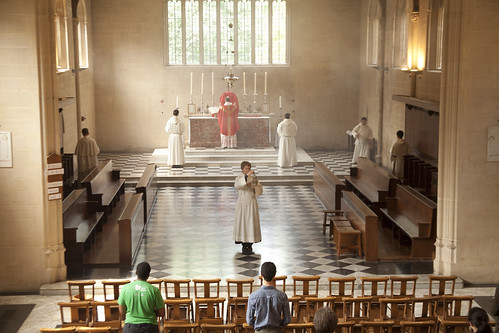The Traditional Mass and the Laity: a Position Paper from the FIUV
 | ||
| The congregation is blessed with incense as the celebrant carries on the prayers and ceremonies at the Altar. Dominican Rite Mass in Oxford. |
Today I am posting a new 'Position Paper' on the 1962 Missal published by the FIUV, the Foederatio Internationalis Una Voce. This addresses the argument, made from time to time, that by not having as many lay people involved in the liturgy in roles such as Extraordinary Minister of Holy Communion, Lector, leader of the Prayers of the Faithful and so on the Traditional Mass 'excludes' people, and fails to foster their participation.
This argument is confused. When lay people have such liturgical roles,
they are by definition going beyond the role of the simple member of the
congregation, the lay role, to take on a quasi-clerical role. This can
be necessary and good, and it can be a liturgical abuse, but it tells us
nothing about the mode of liturgical participation proper to the laity,
most of whom are left sitting in the pews. The idea that being an
ordinary pew-sitter is not enough to take a proper part in the liturgy
is in fact an example of clericalism. It implies that only clerics count
for anything in the Church, in in her public prayer, and in order to
count for something lay people must become at least quasi-clerics. It
also implies that the real role of the laity, of building the Kingdom of
God in the temporal sphere, the sphere of politics, business, and the
family, is not important.
I've put more commentary on my own blog here.





